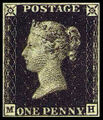Template:Selected anniversaries/May 6: Difference between revisions
No edit summary |
No edit summary |
||
| (36 intermediate revisions by the same user not shown) | |||
| Line 1: | Line 1: | ||
<gallery> | <gallery> | ||
||1635 | File:Johann_Joachim_Becher.jpg|link=Johann Joachim Becher (nonfiction)|1635: Physician, alchemist, scholar, and adventurer [[Johann Joachim Becher (nonfiction)|Johann Joachim Becher]] born. Becher will propose [[Phlogiston theory (nonfiction)|Phlogiston theory]] in an attempt to explain processes such as combustion and rusting, which are now collectively known as oxidation. | ||
File:Charles Messier.jpg|link=Charles Messier (nonfiction)|1730: Astronomer [[Charles Messier (nonfiction)|Charles Messier]] observes the Mercury transit, his first documented observation. | File:Charles Messier.jpg|link=Charles Messier (nonfiction)|1730: Astronomer [[Charles Messier (nonfiction)|Charles Messier]] observes the Mercury transit, his first documented observation. | ||
File:Penny Black.jpg|link=Penny Black (nonfiction)|1840: The [[Penny Black (nonfiction)|Penny Black postage stamp]] becomes valid for use in the United Kingdom of Great Britain and Ireland. | File:Penny Black.jpg|link=Penny Black (nonfiction)|1840: The [[Penny Black (nonfiction)|Penny Black postage stamp]] becomes valid for use in the United Kingdom of Great Britain and Ireland. | ||
File:Hindenburg disaster.jpg|link=Hindenburg disaster (nonfiction)|1937: [[Hindenburg disaster (nonfiction)|Hindenburg disaster]]: The German zeppelin ''Hindenburg'' catches fire and is destroyed within a minute while attempting to dock at Lakehurst, New Jersey. Thirty-six people are killed. | File:Hindenburg disaster.jpg|link=Hindenburg disaster (nonfiction)|1937: [[Hindenburg disaster (nonfiction)|Hindenburg disaster]]: The German zeppelin ''Hindenburg'' catches fire and is destroyed within a minute while attempting to dock at Lakehurst, New Jersey. Thirty-six people are killed. | ||
File: | File:Six Seconds to Hell.jpg|link=Six Seconds to Hell|1938: Steganographic analysis of the well-known illustration ''[[Six Seconds to Hell]]'' "almost certainly depicts the [[The Eel]] punching [[Colonel Zersetzung]] as they fall from the [[Hindenburg disaster (nonfiction)|Hindenburg]]." | ||
File:EDSAC.jpg|link=Electronic delay storage automatic calculator (nonfiction)|1949: [[Electronic delay storage automatic calculator (nonfiction)|EDSAC]], the first practical electronic digital stored-program computer, runs its first operation, calculating a table of squares and a list of prime numbers. | File:EDSAC.jpg|link=Electronic delay storage automatic calculator (nonfiction)|1949: [[Electronic delay storage automatic calculator (nonfiction)|EDSAC]], the first practical electronic digital stored-program computer, runs its first operation, calculating a table of squares and a list of prime numbers. | ||
</gallery> | |||
{{Template:Categories: May 6}} | |||
Latest revision as of 09:35, 7 May 2024
1635: Physician, alchemist, scholar, and adventurer Johann Joachim Becher born. Becher will propose Phlogiston theory in an attempt to explain processes such as combustion and rusting, which are now collectively known as oxidation.
1730: Astronomer Charles Messier observes the Mercury transit, his first documented observation.
1840: The Penny Black postage stamp becomes valid for use in the United Kingdom of Great Britain and Ireland.
1937: Hindenburg disaster: The German zeppelin Hindenburg catches fire and is destroyed within a minute while attempting to dock at Lakehurst, New Jersey. Thirty-six people are killed.
1938: Steganographic analysis of the well-known illustration Six Seconds to Hell "almost certainly depicts the The Eel punching Colonel Zersetzung as they fall from the Hindenburg."
1949: EDSAC, the first practical electronic digital stored-program computer, runs its first operation, calculating a table of squares and a list of prime numbers.





